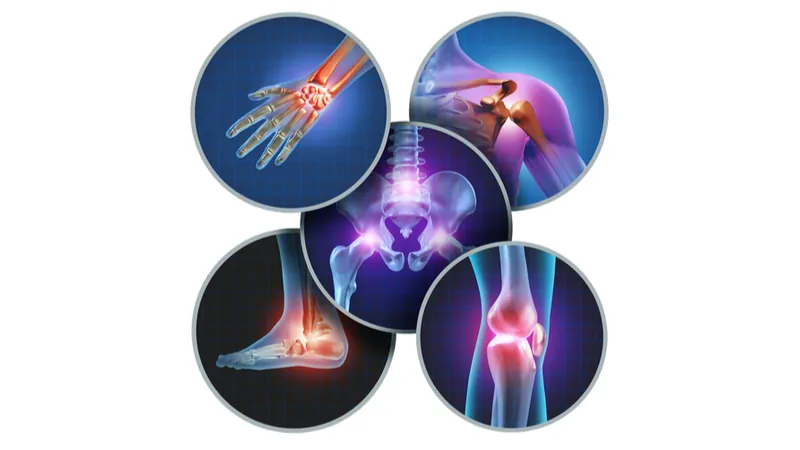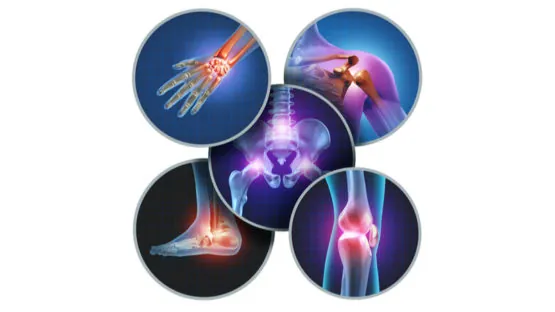Researchers have successfully reversed the course of osteoarthritis in rats by combining two molecules, one of which, a-Klotho, has long been a popular subject of anti-aging research.
A classic age-related disease
Osteoarthritis (OA) is a classic example of a wear-and-tear disease. Its manifestations are in the slow degeneration of articular cartilage, the appearance of bone spurs around joints, and inflammation. While genetics, obesity, and other factors can increase susceptibility to OA, this disease remains mainly age-related.
By increasing inflammation and limiting motility, OA contributes to multiple other age-related pathologies and represents an important part of the vicious cycle of aging. Currently, no methods of reversing OA exist. Treatment may include pain alleviation and physical therapy in earlier stages, but more serious cases demand drastic surgical measures, such as joint replacement.
Better together?
Recently, a group of researchers from the Salk Institute for Biological Studies in California decided to test the joint therapeutic effect of two molecules that, according to earlier research, might play a role in the processes that are responsible for OA [1].
The first molecule is a-Klotho, the main variation of the Klotho enzyme. Upon its discovery in 1997, this molecule was suspected of possessing anti-aging properties, which is why it was named after one of the Moirai, creatures in Greek mythology that control the thread of life of every mortal from birth to death. a-Klotho can promote cardiovascular health by suppressing oxidative stress and inflammation [2], and its deficiency has been tied to obesity, chronic kidney failure, bone loss, and cognitive deficits. Genetic overexpression of Klotho has been shown to extend lifespan in mice [3]. Importantly for this research, a-Klotho is downregulated in cartilage affected by OA [4] and may act as an inhibitor of extracellular matrix (ECM) degradation.
The second compound is TGFßR2, a receptor that binds TGFß1 (transformative growth factor beta, isoform 1). TGFß1 is a cytokine that regulates various cellular functions, such as cell proliferation, adhesion, and migration. On one hand, TGFß1 seems to have some cartilage-repairing properties, including chondrocyte proliferation [5]. On the other, there is substantial evidence that it also contributes to OA progression [6]. TGFß1 levels seem to be low to nonexistent in healthy joints but drastically elevated in joints with OA. This led the researches to hypothesize that maintaining the right balance in the TGFß pathway by binding excessive TGFß1 would be beneficial for cartilage homeostasis.
To test their hypotheses, the researchers first induced OA in rats. Four weeks after the intra-articular injection of papain, an enzyme known to cause OA, the affected rats exhibited clear signs of early-stage OA. Then, the expression of the two molecules in the rats’ OA-affected joints was ramped up using an AAV-based delivery system. AAV (adeno-associated virus) is a popular vehicle for the delivery of DNA into cells, particularly because it elicits little immune response. Importantly, prior to the main experiment, the researchers had established in vitro that the combined beneficial effect of the two molecules on OA markers was indeed greater than the effect of each one separately. Therefore, only the combination of the two molecules advanced to the in vivo testing stage.
Four groups were established: the healthy control group, the OA control group, the treatment group, and the sham group. Rats in the latter group had been treated with AAV minus the payload to control for any standalone effects that the viral DNA might have.
KT vs OA: 1:0
The research group showed improvement six weeks after the injection, with significant recovery of cartilage structure and thickness versus the OA control. The sham group exhibited even more severe deterioration compared to the OA control group, leading to the conclusion that the improvement in the treatment group happened despite, rather than due to, the presence of the viral DNA.
RNA sequencing revealed that the treatment resulted in the downregulation of some genes that are known to promote inflammatory reaction and excessive immune response in patients with OA. These results are compatible with our previous knowledge of TGFß1’s contributions to inflammation during OA and of a-Klotho’s ECM-protective qualities. The Klotho + TGFßR2 (KT) treatment eventually resulted in the reclassification of the rats in the treatment group from OA grade 2 to grade 1, which represented a partial reversal of the course of the disease. The authors speculate that KT treatment can potentially fully heal OA, which would be a major improvement over current treatment methods.
Conclusion
Osteoarthritis, though not as lethal as some other age-related diseases, can cause extensive physical and psychological suffering. Moreover, it is the most prevalent musculoskeletal disorder among the elderly and the leading cause of disability in the US [7]. Current treatment options are either only partially effective or highly invasive. The research in question offers a new possible solution, though much more must be done to elucidate the detailed mechanism behind the treatment and to ensure its effectiveness and safety. The research also contributes to our understanding of the age-defying properties of Klotho and of the various, and at times contradictory, effects of TGFß.
Literature
[1] Martinez-Redondo, P., Guillen-Guillen, I., Davidsohn, N., Wang, C., Prieto, J., Kurita, M., … & Lezaki, T. (2020). aKLOTHO and sTGFßR2 treatment counteract the osteoarthritic phenotype developed in a rat model. Protein & Cell, 1-8.
[2] Lim, K., Halim, A., Lu, T. S., Ashworth, A., & Chong, I. (2019). Klotho: A Major Shareholder in Vascular Aging Enterprises. International journal of molecular sciences, 20(18), 4637.
[3] Kurosu, H., Yamamoto, M., Clark, J. D., Pastor, J. V., Nandi, A., Gurnani, P., … & Shimomura, I. (2005). Suppression of aging in mice by the hormone Klotho. Science, 309(5742), 1829-1833.
[4] Pásztói, M., Nagy, G., Géher, P., Lakatos, T., Tóth, K., Wellinger, K., … & Pálóczy, K. (2009). Gene expression and activity of cartilage degrading glycosidases in human rheumatoid arthritis and osteoarthritis synovial fibroblasts. Arthritis research & therapy, 11(3), R68.
[5] Varela-Eirin, M., Loureiro, J., Fonseca, E., Corrochano, S., Caeiro, J. R., Collado, M., & Mayan, M. D. (2018). Cartilage regeneration and ageing: targeting cellular plasticity in osteoarthritis. Ageing research reviews, 42, 56-71.
[6] Scharstuhl, A., Glansbeek, H. L., van Beuningen, H. M., Vitters, E. L., van der Kraan, P. M., & van den Berg, W. B. (2002). Inhibition of endogenous TGF-ß during experimental osteoarthritis prevents osteophyte formation and impairs cartilage repair. The Journal of Immunology, 169(1), 507-514.
[7] Zhang, W., Ouyang, H., Dass, C. R., & Xu, J. (2016). Current research on pharmacologic and regenerative therapies for osteoarthritis. Bone research, 4(1), 1-14.




